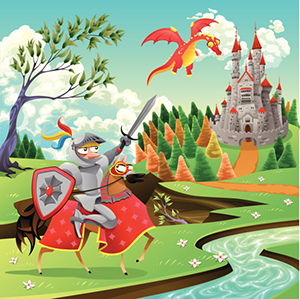|
Following successful completion of this lesson, students will be able to:
- Read an Anglo-Saxon text to build an understanding of the culture and to acquire new information
- Apply strategies to comprehend, interpret, evaluate, and appreciate the text
- Analyze the development of conflicts in a piece of literature
The above objectives correspond with the following Alabama Course of Study Objectives:
CCRS 1Cite strong and thorough textual evidence to support analysis of what the text says explicitly as well as inferences drawn from the text.,
CCRS 2Determine two or more themes or central ideas of a text and analyze their development over the course of the text, including how they interact and build on one another to produce a complex account; provide an objective summary of the text.,,
CCRS 8Demonstrate knowledge of foundational works of European literature with a concentration in British literature,
CCRS 9By the end of Grade 12, read and comprehend literature, including stories, dramas, and poems, at the end of the Grades 11-College and Career Readiness (CCR) text complexity band independently and proficiently. ,
CCRS 19Write arguments to support claims in an analysis of substantive topics or texts, using valid reasoning and relevant and sufficient evidence.,
CCRS 19dEstablish and maintain a formal style and objective tone while attending to the norms and conventions of the discipline in which they are writing.,
CCRS 19eProvide a concluding statement or section that follows from and supports the argument presented.,
CCRS 20bDevelop the topic thouroughly by selecting the most significant and relevant facts, extended definitions, concrete details, quotations, or other information and examples appropriate to the audience's knowledge of the topic. ,
CCRS 22Produce clear and coherent writing in which the development, organization, and style are appropriate to task, purpose, and audience.,
CCRS 24Use technology, including the Internet, to produce, publish, and update individual or shared writing products in response to ongoing feedback, including new arguments or information.,
CCRS 26Gather relevant information from multiple authoritative print and digital sources, using advanced searches effectively,
CCRS 27Draw evidence from literary or informational texts to support analysis, reflection, and research.,
CCRS 32Gather relevant information from multiple authoritative print and digital sources, using advanced searches effectively; assess the strengths and limitations of each source in terms of the task, purpose, and audience; integrate information into the text selectively to maintain the flow of ideas, avoiding plagiarism and overreliance on any one source and following a standard format for citation., and
CCRS 33Make strategic use of digital media (e.g., textual, graphical, audio, visual, and interactive elements) in presentations to enhance understanding of findings, reasoning, and evidence and to add interest.. |
Introduction
Beowulf is King of the Geats. To get to this place in his life, he had to overcome many obstacles along his way. He has fought monsters, serpents, people, and many other villainous creatures. Beowulf is now considerably older; he has been reigning over the Geats for fifty years. In this last lesson, you will read about Beowulf’s last battle. We have skipped much of the poem to get to the last of the three major conflicts. Make sure you complete your graphic organizer filling in with details from the text about Beowulf’s final battle.

